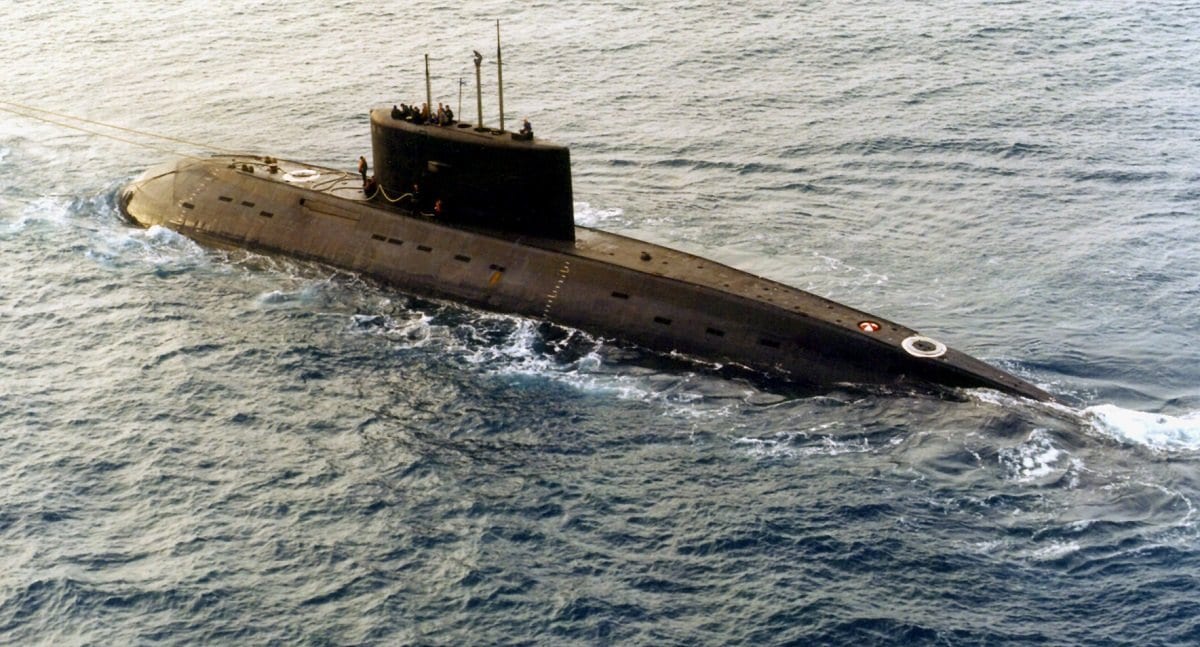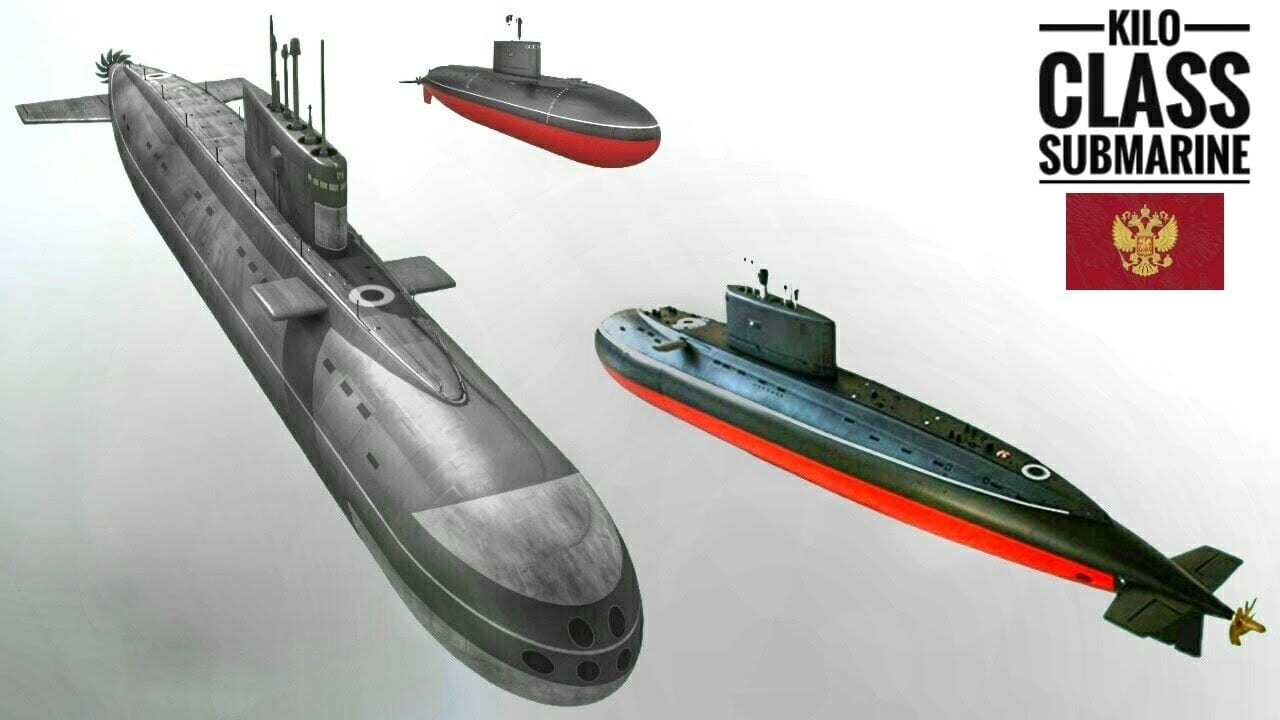For decades now, the Russian Kilo-class submarine has been a mainstay of the Russian Navy. They might be older and not even nuclear powered but the U.S. Navy respects them for the stealthy capabilities they can leverage underwater.
The Russian Navy’s Black Sea Fleet is believed to have four improved Kilo-class submarines, each equipped with Kalibr land-attack missiles operating in the Black Sea. Of those, Rostov-na-Donu (B-237) reportedly transited through the Dardanelles less than two weeks before Russia launched its unprovoked invasion of Ukraine. The submarine, which is part of the Black Sea Fleet’s 4th Independent Submarine Brigade, entered service with the Russian navy in December 2014.
The submarine deployment was part of Russia‘s pre-invasion build-up of naval forces in the Black Sea.
Russia currently operates nine of the improved diesel-electric submarines, while an additional four are under construction.
Maintaining a Non-Nuclear Submarine Force
Unlike the United States Navy, which has gone all-in on nuclear power, the Russian Navy currently maintains a submarine force that consists of diesel and nuclear-powered submarines. Its fleet of diesel submarines has been seen as more than adequate for conflicts in Europe and the Middle East, which could explain why four of the boats are now in the Black Sea.
Nicknamed the “Black Hole” submarine by the U.S. Navy, the improved Kilo-class is considered extremely quiet.
A lot of silencing went into making the Kilo-class so quiet. The hull has been described as having the approximate shape of a drop of water, which greatly reduced water resistance over older, World War II-era submarine designs. In addition, the propulsion plant was isolated on a rubber base so it had no contact with the hull, and that prevented vibrations from turning into noise that could be picked up by an enemy.
The ship also was equipped with a rubbery anechoic coating to further deaden noise emanating from the submarine, which occasionally gives the submarines a blocky appearance noticeable in photographs. To help maintain its underwater stealth, an air regeneration system was developed to keep a full crew supplied with oxygen for up to 260 hours, providing the boat with almost two weeks worth of underwater endurance.
Development of the Kilo
The Soviet Navy designed the original Kilo-class tranche, also known as Project 877 submarines, in the early 1980s for anti-submarine warfare (ASW) as well as anti-surface warfare (ASuW) in shallow coastal/littoral waters. To facilitate that role, the Kilo-class is considerably smaller than Russia’s massive ballistic missile submarines, so-called boomers. It was originally meant to serve the navies of the Warsaw Pact countries, replacing older Whiskey– and Foxtrot-class boats.
Twenty-four Kilo-class submarines were operated by the Soviet Union at the end of the Cold War, of which eleven are still reportedly operated by Russia. One of the aging boats was sold to Poland, which remains operational, while another now-retired sub had been sold to Romania. An additional 10 had been sold to India; nine of which are still operational while the tenth caught fire and sank pierside in August 2013. Iran is believed to operate three Kilo-class boats, and Algeria operates two more. China also has two of the former Soviet submarines in its navy that were purchased after the end of the Cold War.
The Improved Kilo
Since its inception, the Kilo-class has also been steadily improved and is represented by three variants: Project 877, Project 636, and the latest Project 636.3. The latter version was developed to rejuvenate the flagging Russian submarine force after the dissolution of the Soviet Union.
The Project 636.3, which are in service with the Russian Navy’s Black Sea Fleet, are powered by two diesel generators and an electric drive, giving them enough power to make ten knots at the surface and seventeen knots underwater. While stealthy, these are fast submarines in any sense of the word.
Yet, the boats have a range of six thousand to 7,500 nautical miles, meaning that from the Russian Northern Fleet headquarters they can patrol for one thousand nautical miles and then go on to Cuba. Thanks to that air regeneration system they could remain submerged – if necessary – for much of the trip.

A Russian-built, Kilo-class diesel submarine purchased in the late 1990s by Iran, is towed by a support vessel in this photograph taken in the central Mediterranean Sea during the week of December 23. The submarine and the support ship arrived at Port Said, Egypt, on Tuesday and were expected to begin transiting the Suez Canal today, Jan. 2, 1996. Ships and aircraft from the U.S. NavyÕs Sixth Fleet are tracking the submarine, which has been making the transit on the surface. This is the third Kilo-class submarine the Iranians have purchased from Moscow.
Thanks to its stealth and endurance, in addition to its primarily ASW and ASuW roles, the Project 636.3 subs can also be employed in general reconnaissance and patrol missions. The boats are capable of detecting an enemy submarine at a range three to four times greater than it can be detected. The submarines are noted for their ability to work well in shallow water, where a pair of ducted props powered by low-speed motoring motors likely allows it to operate closer to the seafloor.
Despite the age of the initial design, the improved Kilo-class has remained a workhorse in the modern Russian Navy.

